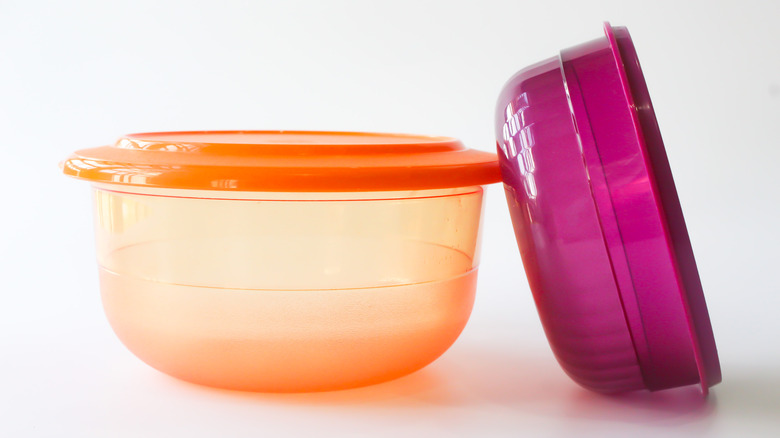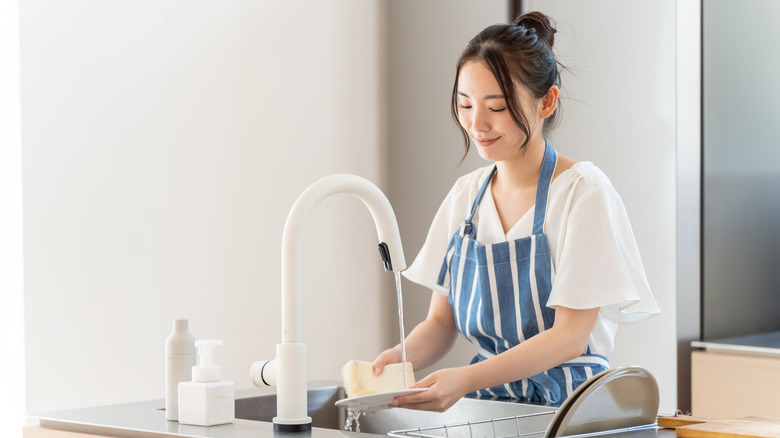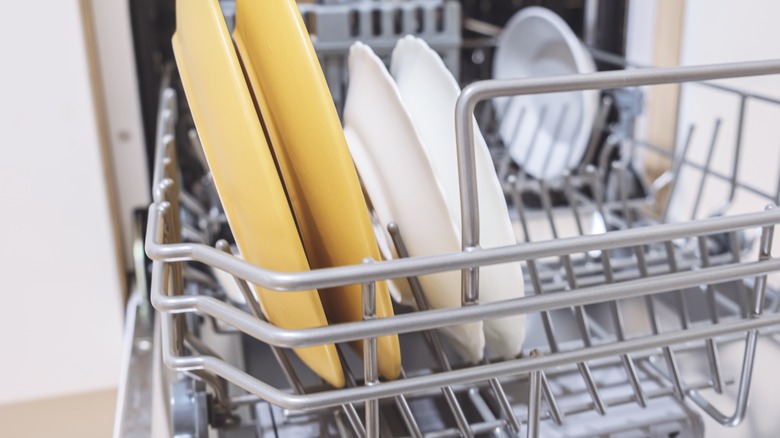The Best Way To Clean Plastic Containers In The Dishwasher
Synthetic plastic has been an invention of overwhelming convenience and societal transformation since its creation in 1862 by the British inventor Alexander Parkes (via Science Museum Group). From water bottles and milk cartons to credit cards and cereal box liners, it is essentially unavoidable in the modern world. It also tends to make up a decent majority of the average individual's kitchen supplies, including that surplus of Tupperware and plastic food storage containers that eventually pile up over time.
However, the convenience of plastic containers doesn't come without the annoyances of cleaning the seemingly resilient accumulation of stains, or the concern that washing them with heat can lead to deterioration or the release of harmful chemicals, such as BPA. While the risks of chemicals in plastic are still up for debate by scientists, according to The Washington Post, if you want to avoid hand-washing your containers, just make sure that they are labeled "dishwasher safe" and remember the following tips.
Before the dishwasher
When it comes to most varieties of plastic, extreme heat is typically not something you want in the mix. First and foremost, the American Cleaning Institute recommends recycling or throwing out any containers that can warp when exposed to heat. Items it would be a mistake to put in the dishwasher can include plastic takeout containers and any other receptacles that are not meant to be used again. It is also important to keep in mind that plastic is not an indestructible product, so in order to ensure lasting food safety, The Guardian advises that you avoid using any containers that have visible damage, deformation, discoloration, or lingering stains.
If your container passes these initial tests, congratulations! You have one more step before it is ready for the dishwasher, says the American Cleaning Institute. To guarantee the container is completely cleaned in the machine, rinse out any traces of food residue with hot water and wipe down the container with a clean rag or paper towel prior to placing it in the dishwasher.
During and after the dishwasher
Once the containers are ready for cleaning, place them on the top rack of your dishwasher to ensure they encounter the least amount of heat possible and so the water pressure won't flip them over (via The Washington Post). If water pools inside the container, you may have to wash it again — who wants leftovers-and-dishwater soup?
Place the inside of the container face-down and toward the middle where the dishwasher will spray to ensure thorough cleaning, and so that any water drains properly out of the container. Avoid piling the containers on top of each other or placing them too close together, as this will also impede the cleaning process, according to the American Cleaning Institute.
Plastic containers come in many shapes and sizes, and sometimes water pooling in certain areas, like the brim, is simply unavoidable. Once the dishwasher cycle is complete, drain any water that has accumulated in these crevices and dry the containers off with a clean, dry towel, or leave them on a drying rack before putting them away to wait for the next set of leftovers.


